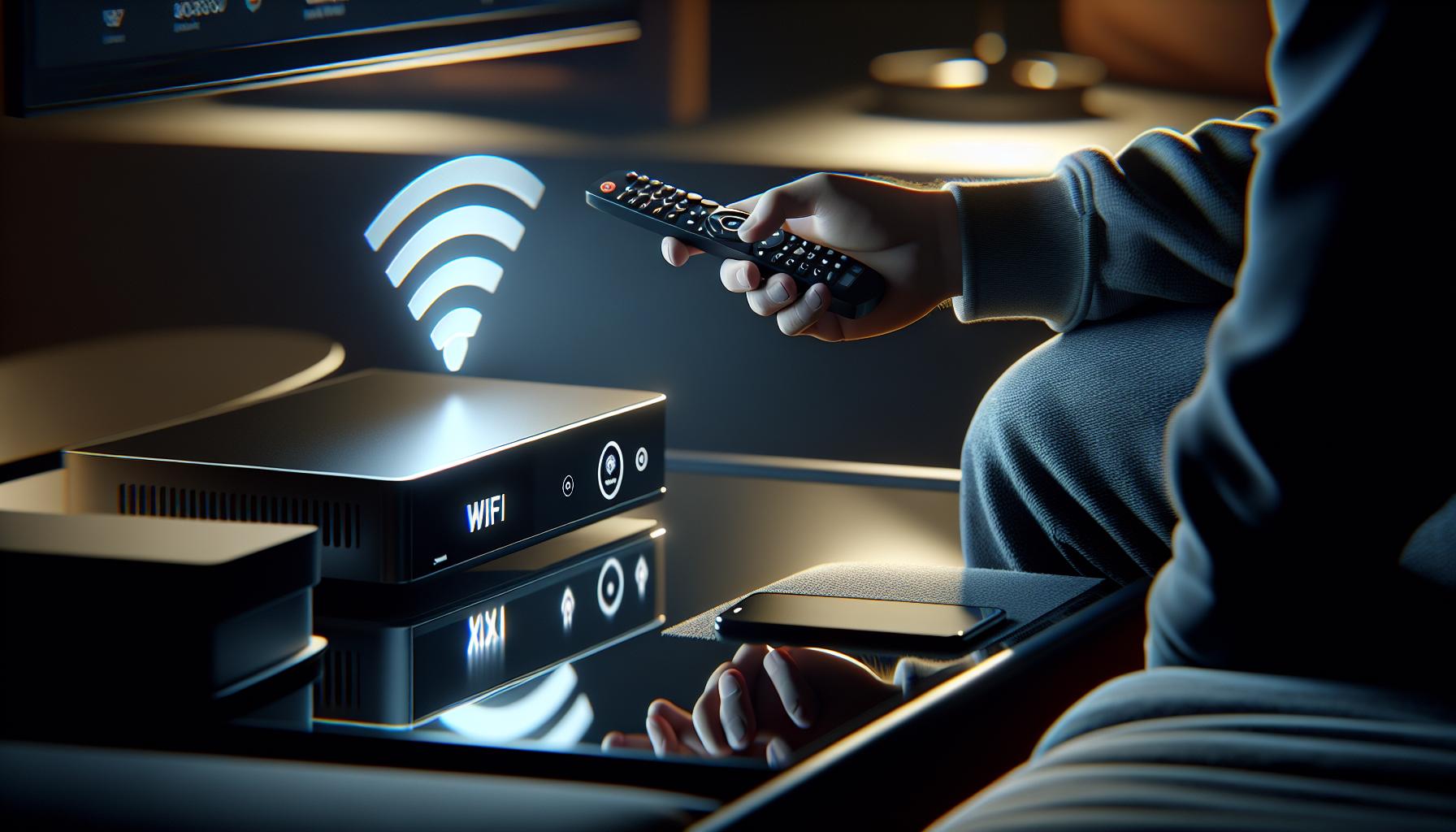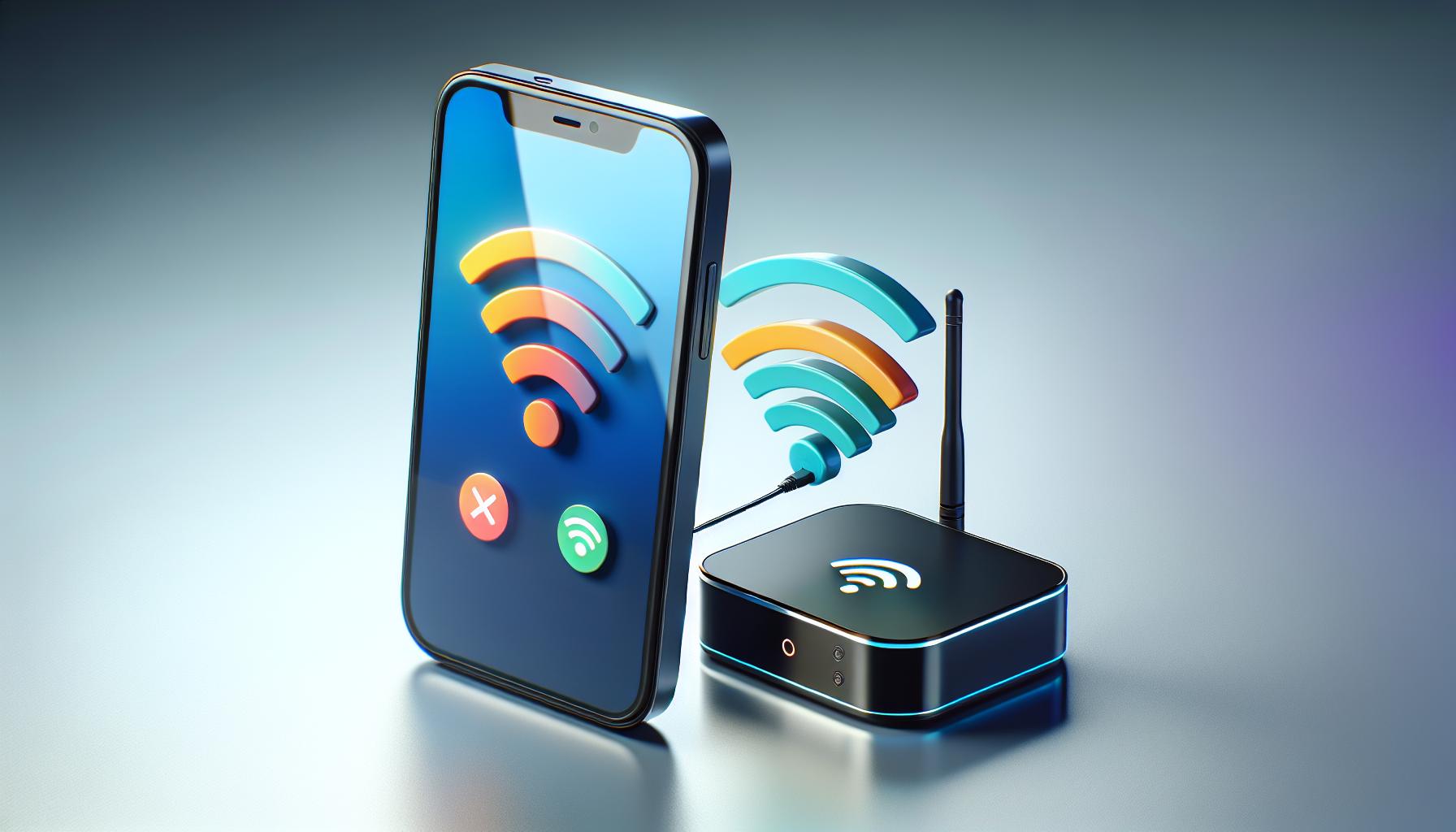Ever wondered how to connect your phone to Apple TV? You're not alone. It's a common question, and luckily, the answer is simpler than you might think.
In this guide, we'll walk you through the steps to get your phone and Apple TV talking to each other. Whether you're looking to stream your favorite show, share photos with friends, or play a game on the big screen, we've got you covered.
So, let's dive in and get your devices connected. It's time to unlock a whole new world of entertainment possibilities, right at your fingertips.
Step 1: Check compatibility between your phone and Apple TV
Before you leap into the process of connecting your phone to your sleek Apple TV, it's crucial to ensure their compatibility. The compatibility factor is critical not just for the connection but also for a smooth, interruption-free experience of sharing your photos, streaming shows, and playing games on the big screen.
If you're an iOS user, the good news is that both your iPhone and Apple TV are Apple products, which are built to work seamlessly with each other. However, some specific iPhone and Apple TV models might not pair well due to differences in their operating systems or hardware features.
For Android users, the process might be a little trickier but certainly not impossible. While Apple gadgets are designed to connect seamlessly with each other, connecting an Android device to an Apple TV is a little more complex since you're bridging two different technological ecosystems here.
To determine compatibility, initially, check your phone's and Apple TV's software versions. Here's a brief guideline that might help:
| Apple TV Generation | Minimum Software Requirement |
|---|---|
| 1st Gen | iOS 5 |
| 2nd Gen and later | iOS 7 |
As per your Apple TV version, ensure that your iPhone runs on the corresponding iOS version or newer.
For Android users, various third-party apps facilitate connections with Apple TV. Make sure you rely on trustworthy, top-rated apps.
Step 2: Connect your phone and Apple TV to the same Wi-Fi network

Before initiating the connection process between your phone and Apple TV, it's crucial to ensure that both devices are on the same Wi-Fi network. This facilitates seamless communication, reducing lags or glitches in the streaming process.
First, you'll need to connect your Apple TV to Wi-Fi. Navigate to the Settings option on your Apple TV device. Click Network and select Wi-Fi. Remember that different Apple TV models may have slight variations. However, the fundamental step remains: identify your Wi-Fi network, select it, and enter the correct password when prompted.
Secondly, let's get your mobile connected. Be it iOS or Android, the process is similar. Navigate your phone's settings to find the Wi-Fi options. Again, look for your Wi-Fi network name, select it, and input your password.
Note: It's _necessary_ that both devices are connected not just to any Wi-Fi connection, but directly to the same network. Often, homes have a 5GHz network and a 2.4GHz network available. Some devices connect better to one over the other due to signal strength variances.
If both your Apple TV and mobile phone are successfully hooked up to the same Wi-Fi network, you're ready for the next phase. Be sure not to rush through this stage. Double-check your connections before proceeding. After all, a secure connection is key to providing an uninterrupted and high-quality streaming experience.
Look out for our third step where we'll guide you through establishing a successful link between your phone and Apple TV. Whether it's for streaming a blockbuster movie or sharing a memorable vacation album on the big screen, we're here to make the process flawless and enjoyable for you.
Step 3: Enable AirPlay and Screen Mirroring on your phone
Now that you've ensured your phone and Apple TV are on the same Wi-Fi network, let's move on to enabling AirPlay and Screen Mirroring on your phone - an essential step for connecting the two devices.
If you're an iPhone user, the process is pretty straightforward. Start by swiping down from the top-right corner of your screen to open the control center. Here, you’ll find a button labeled "Screen Mirroring". Click on it, and your iPhone will start searching for available devices. Among the listed devices, choose your Apple TV.
For all the Android phone users out there, the steps are a tad bit different. You'll have to initiate the feature from the drop-down menu in your phone—usually indicated by a cast button. Select your Apple TV from the list of devices that appear. If you do not see the cast button, it's likely nested within the settings menu. To access it, simply navigate to Settings > Display > Cast Screen.
Keep in mind that the exact path to the casting feature might vary depending on your Android's version and phone manufacturer. So, if you feel stuck, it's always good to have a quick check of your phone's user manual or a quick online search specific to your model.
One thing to bear in mind – screen mirroring requires a certain amount of bandwidth. Therefore, ensuring a strong Wi-Fi connection is key.
The process to enable AirPlay and Screen Mirroring may sound complex, but with a little practice, you'll find it's really a breeze. After all, the aim here is to let you seamlessly connect your phone to Apple TV for an enhanced viewing experience. So, take your time with this step - the uninterrupted streaming experience that follows is worth the effort.
Step 4: Connect your phone to Apple TV using AirPlay
By now, you've checked device compatibility, connected to Wi-Fi, and enabled AirPlay on your phone. It's high time to get your phone to talk to Apple TV via AirPlay. With AirPlay, a world of high-resolution streaming awaits.
Go to your iOS device's Control Center. For iPhone 8 or earlier, swipe up from the bottom of your screen. On iPhone X or later, you'd swipe down from the upper-right corner of the screen. On your iPad, you'd double-tap the Home button.
Next, find the Screen Mirroring icon, which generally resembles two overlaid rectangles. Once you've located it, tap on the icon. It'll then show a list of available devices. Look for the name of your Apple TV and simply touch its name to initiate a connection.
This forms a bridge between your phone and your Apple TV. The rapport via the AirPlay route ensures seamless streaming of your favorite content.
For Android users, the journey, while a tad different, isn't complicated. Leveraging third-party apps like AllCast or Mirror for Samsung TV, you can share your android phone's screen with your Apple TV. Install the desired app, launch it and follow the prompts to connect to your Apple TV.
Don't forget - connecting to Apple TV through AirPlay mirrors every bit of your phone activities onto the bigger screen. Whether it's scrolling through photos or watching exciting videos, it all plays on the large canvas of your TV.
Almost there - the final task demands slight adjustments on your Apple TV’s settings. You've to ensure that AirPlay is turned on in the Apple TV settings. Navigate to Settings > AirPlay and HomeKit > AirPlay > On on the main menu of your Apple TV.
With these steps under your belt, you're well versed in the art of connecting a phone to Apple TV using AirPlay. But remember - flawless streaming needs a robust Wi-Fi connection. Keep that in check for an uninterrupted experience.
Step 5: Adjust settings and optimize the connection

After successfully connecting your phone to Apple TV, it's crucial to pay some attention to your connection settings. This part will take you through the process, ensuring that your mirroring experience will be smooth, enabling you to make the most out of it.
Let's start with Adjusting the Display Size. Occasionally, you might notice that your phone's screen doesn't fit perfectly on your TV. Don't worry. You can resolve this by adjusting the overscan compensation setting. Go to 'Settings' on your Apple TV, choose 'Audio and Video' then 'Adjust Display Size'.
For Video Quality Settings, remember that better quality requires a faster internet connection. If your Wi-Fi is not the strongest, it's advisable to set a lower quality to prevent constant buffering during your Apple TV mirroring session. On the flip side, if you're blessed with a high-speed Wi-Fi connection, turn up the quality for an even better viewing experience.
For Android users using third-party apps, make sure you've got your app's settings tweaked as well. In AllCast, for instance, locate the 'Settings' icon at the bottom of the screen. In there, you'll find options for resolution and quality. Adjust as per your preference and your connection's strength.
Effectuate setting adjustments and optimize your connection for seamless Apple TV mirroring. Remember to check back on these settings occasionally, especially if you notice a change in your Wi-Fi speed. By keeping these settings optimized, you ensure yourself a fantastic streaming session.
And there you have it, your guide to fine-tuning your phone to Apple TV connection. Keep these points in mind and have an uninterrupted, hassle-free streaming experience.
So, that's iOS and Android covered — what about PC or Macs? Well, there's a solution for those too, but that's a topic for another section.
Conclusion
You've now got the know-how to connect your phone to Apple TV. Whether you're an iOS user utilizing AirPlay or an Android aficionado leveraging apps like AllCast or Mirror for Samsung TV, you're all set. Remember, the key elements to a smooth, uninterrupted streaming experience are having AirPlay enabled on your Apple TV and a robust Wi-Fi connection. Don't forget the importance of fine-tuning settings on your Apple TV and in your third-party apps. Adjusting the display size and video quality can significantly enhance your mirroring experience. So, go ahead, revel in the seamless integration of your phone and Apple TV. And stay tuned for our upcoming post on connecting your PC or Mac to Apple TV. Happy streaming!
Frequently Asked Questions
How can I connect my phone to Apple TV?
To connect your phone to Apple TV, use the AirPlay feature from your phone's control center. If you're using Android, you'll need third-party apps like AllCast or Mirror for Samsung TV. Remember to enable AirPlay on your Apple TV settings and maintain a strong Wi-Fi connection.
How can I adjust my phone's display settings on Apple TV?
Once your phone is connected to Apple TV, you can adjust the display size and video quality from your Apple TV settings. If you're an Android user using a third-party app, you'll need to adjust your settings from within the app.
Can I connect my PC or Mac to my Apple TV?
Yes, but the process of connecting a PC or Mac to Apple TV wasn't covered in this article. It is a different process and will be discussed in a separate section.
Why do I need a strong Wi-Fi connection for Airplay?
A strong Wi-Fi connection ensures a seamless mirroring experience between your phone and Apple TV. It reduces lag and buffering, allowing for uninterrupted streaming of your content.
What apps can I use to connect my Android phone to Apple TV?
AllCast and Mirror for Samsung TV are recommended third-party apps that you can use to share your Android phone's screen with Apple TV.




